Make Mine Mint.
Posted on | April 30, 2012 | 4 Comments
Once upon a time, I tried companion planting to get rid of squash bugs. In between my cucumbers and zucchinis and melons, I planted lots of marigolds, nasturtium, and herbs. The bugs ate the marigolds and the nasturtiums as soon as they killed off the cucumbers, zucchinis, and melons. Then the mint ran all over the the thyme, sage, and oregano. So I still had bugs. And mint.
Although, for the record, the thyme tried to give the mint a run for the money.
The mint won.
A friend came over and told me I should have planted that mint in a container. Or else it would be sure to spread everywhere. I figured she was exaggerating. She’s the kind of friend that asks you to excuse the mess in her house. When there’s a coffee cup in the sink and a throw pillow crooked on the couch.
I shrugged.
“It’s the only thing the squash bugs didn’t eat. Maybe if it spreads everywhere it’ll keep the squash bugs away.”
Turns out that when mint spreads all over your garden it doesn’t actually deter the squash bugs. But it does deter this:
Crabgrass.
Crabgrass has been a problem in our garden for a long time. It starts in the mulched areas and spreads into the raised beds. Or vice versa. It grows through mulch and on top of mulch. It lays low enough to the ground that you can scalp it by mowing, but not kill it. And as the weather warms, the crabgrass spreads and begins to root itself at the nodes instead of just the center.
Europeans originally imported crabgrass from Africa where the seeds are still used as a diet staple. Europeans used it as a forage for animals and fermented the seeds for beer (how did Africa fail to notice that little benefit, I wonder?). Immigrants to America brought crabgrass in order to use the seeds in breads and porridge. Until someone invented oatmeal. Which I’m guessing was a huge step forward in the porridge world. Of course, the previously cultivated crabgrass was immediately deserted and left to it’s own devices, which included spreading throughout North America. Because bringing over small pox wasn’t drastic enough.
Crabgrass remains to this day. If, like me, you spend March celebrating your birthday, and April recovering from celebrating your birthday, then you will head to the garden in May, and find the crabgrass was celebrating a whole lot harder than you.
But not this year. This year the mint was doing the celebrating. And it didn’t leave an inch of soil for the crabgrass to take root.
For a while, I thought I had made an immense mistake. With only 1 day before I planned to transplant all my summer veggies, I thought I was looking at days of weeding to clear the raised beds. It was shocking. Overwhelming. Typical.
I sighed and pulled on my gardening gloves. But that first clump of mint came up with surprising ease. So did the next clump. As a matter of fact, one handful of mint successfully ripped out a section of the herb that was 1 foot square. Turns out that mint spreads by rhizomes, which made for a dense root base but one that was shallowly rooted for the most part.
All those roots had kept the soil loose and aerated so that as I pulled them, the raised beds turned into soft and crumbly hills perfect for planting without even breaking out the hoe. Never mind the existence of huge worms as evidence that soil was a ripe with active microorganisms.
Best of all, as I yanked the mint from the ground it released a refreshing and invigorating scent. Instead of being immersed in the drudgery and misery that weeding usually entails, I found myself humming happily as I tore down the rows. I pondered the delightful warmth of the sun on my shoulders and the cool spring breeze on my face. I marveled at the abundance of birdsong, the companionship of the guineas, and the busy buzzing of the bees in the blossoming blackberries.
As I carried mound after mound of mint to the animals in the pasture, I rejoiced in the health and strength of my body, despite my best efforts to weaken it with ice cream and french fries. And I admired the intricacy of the food chain—-the land feeding the animals, the animals rejuvenating the land, and the people welcomed into that impressive circle of life.
I even gave thanks for The Other Half. Who was smart enough to spend his youth working and saving for the land and house that our family lives on now, despite the fact that all his friends were spending their time and money on parties, alcohol, and fast motorcycles. Well, he did have a motorcycle. But he sold it to buy me an engagement ring. I told you he was smart.
In about an hour, I had the rows cleared that I needed to transplant summer veggies and was practically euphoric. Ah, the power of aromatherapy. The hippies really do have it right.
Oh, I know the mint will continue to come up. But it shouldn’t pose a problem for the tomatoes or cukes in their trellises. And pulling it up as it grows around the eggplants and peppers will be a lot easier than the bluegrass, vetch, oxalis, and other weeds that run rampant in the absence of mint. For example, who’s going to weed the corn row where I never planted any mint?
There is a raised bed there. It’s just hidden under a variety of weeds trying to disguise themselves as flowers. All of which need to be cleared away before I can put in the corn for this year. Any takers? Anyone? Anyone? Bueller?
.
Comments

4 Responses to “Make Mine Mint.”
Leave a Reply
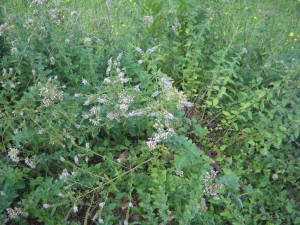
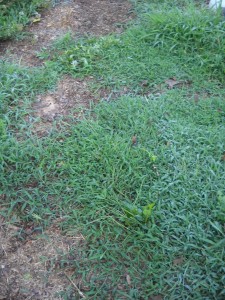
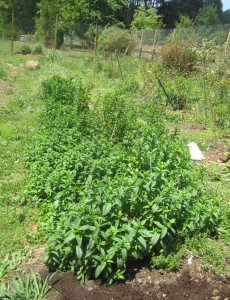
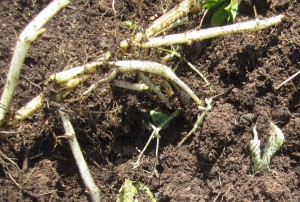
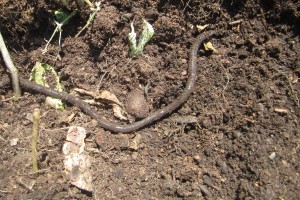
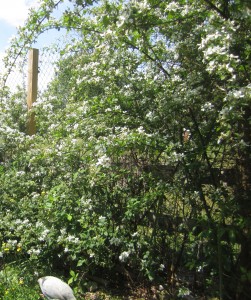
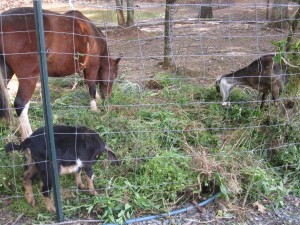
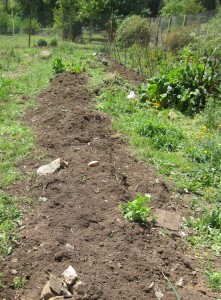
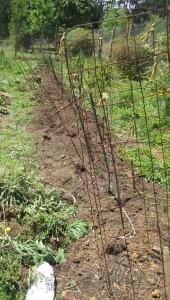
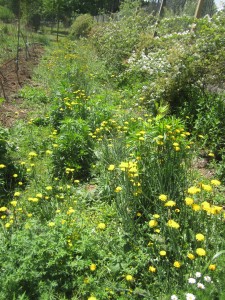



April 30th, 2012 @ 2:52 pm
Enjoyed the article, never trust an African, you never know what kind of weed he is going to leave in your garden… You just need to make mint egg relish and then you will be able to sell two of your most abundant crops…
May 1st, 2012 @ 4:56 am
I am planting mint asap. Thanks!
May 1st, 2012 @ 6:41 am
Hey, I could have told you all that! Mint’s a herb with loads of uses! Next time you cook peas, plonk a big sprig of mint in the water. If you have water in a jug in the fridge (or a Brita filter jug), put a couple of big sprigs in. Mint leaves in your salad, or your salad dressing; mint sauce for lamb (you do have lamb, right?); mint jelly…
You can also mow it. The roots are so shallow that many of the roots will get yanked up by the mower, and it smells incredible when you mow.
May 8th, 2012 @ 5:35 am
I love mint! You just reminded me we don’t have any mint planted here… yet! Sprigs in sweet tea are delicious.